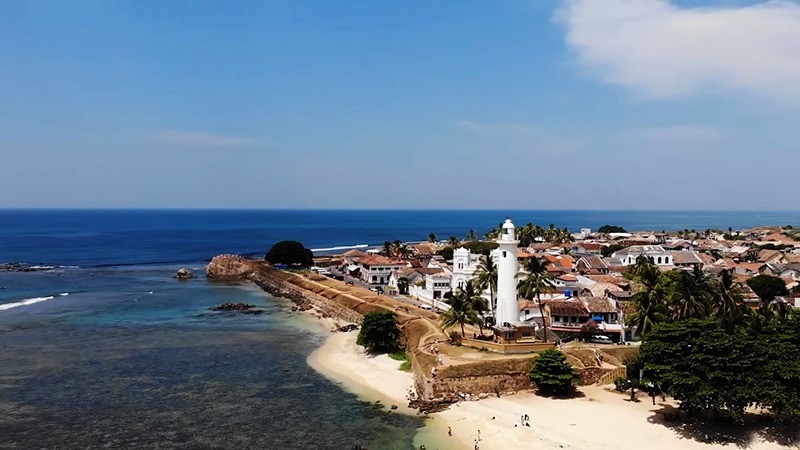Galle is a popular holiday destination in southern Sri Lanka. Galle Harbour and the Galle Fort are the most important parts of the city and they are important foreign exchange earners for the island because it attracts many foreign travellers. The Galle Fort mainly attracts thousands of travellers every year while the Galle Fort provides a safe berth for small passenger ships and yachts.
Table of Contents
- History of Galle Harbour
- Improvement Project of Galle Harbour
- Maritime Archaeology Around Galle Harbour
Galle is a popular beach holiday destination in southern Sri Lanka. Galle Harbour and the Galle Fort are the most important parts of the city and they are important foreign exchange earners for the island. The Galle Fort mainly attracts thousands of travellers every year while the Galle Fort provides a safe berth for small passenger ships and yachts. Galle Harbor is a natural harbour, situated in the southern Sri Lankan city of Galle, Sri Lanka. At present Galle, port is being used as a regional port in the country. Likewise, this Sri Lankan port is the hub of pleasure yachts arriving in Sri Lanka. Global yacht societies have perceived Galle Harbor as one of the world’s best attractions for yachting.
History of Galle Harbour
Galle Harbor was a significant harbour in the country, which was being used even during the pre-Christian times, and acquired significance after the twelfth century. By the fourteenth century years, Galle Harbor was the main harbour in Sri Lanka and held its significance until 1873 when a man-made Colombo harbour became the main harbour.
After the development of the Galle Fort in the seventeenth century, Galle Portt was a significant port in the Indian Sea for over 200 years, which was a significant jetty for boats and ships going between Europe and Asia. When the English colonial government built a breakwater in Colombo Harbor in the late nineteenth century, much global marine traffic was directed to Colombo from Galle. From there on, Galle Port turned into an optional port of the country, however, it actually handles a few ships and boats.
Improvement Project of Galle Harbour
The Sri Lanka Ports Authority has intended to develop the current Port of Galle to meet the rising demand for cargo handling for Sri Lanka as well as for other worldwide destinations. This is planned with the development of a deep-water passenger vessel terminal and embankments, dredging of entry channel and basin, and other facilities at the port of Galle to contribute to the monetary improvement of the country.
Some of the facilities offered by Galle Port were harmed during the 2004 Indian Ocean Tsunami. The proposed improvement likewise hopes to give a fully-fledged yacht marina for the Galle Port to work with the calling yachts, as well as to draw in additional yachts.
SLPA hopes to give berthing possibilities to traveller vessels of 300 m (980 ft) long and freight vessels of 200 m (660 ft) long which have a profundity of 10 m (33 ft) and 10.9 m (36 ft) separately with this improvement. This will be accomplished by developing a breakwater to cover the impacts of waves in the Galle Bay area.
Maritime Archaeology Around Galle Harbour
Galle Harbour is a famous site among local and foreign maritime archaeologists who are doing explorations about old maritime transportation. Many shipwrecks during the colonial era of Portuguese, Dutch and English should be visible in the region around the Bay of Galle located near the Galle harbour. Remarkable shipwrecks in the area include “The East Indiaman Avondster” (1659), the VOC wreck Hercules (1661), Dolfijn (1663), Barbesteijn (1735) and the Geinwens (1776). The marine archaeologists of the Sea Prehistoric Studies Unit (MAU) of Focal Social Asset (CCF) laid out in Galle have been directing numerous archaeological investigations in the Galle harbour area.
The first underwater museum of Sri Lanka is also located at a depth of 15 m (49 ft) within the gaal harbour area, giving a novel sightseeing experience to marine archaeology lovers. It was laid out by the Sri Lanka Naval Force in June 2020. The sculptures in this museum are supposed to form an artificial coral reef after some time, which would improve the marine life of the Galle Harbour region.

